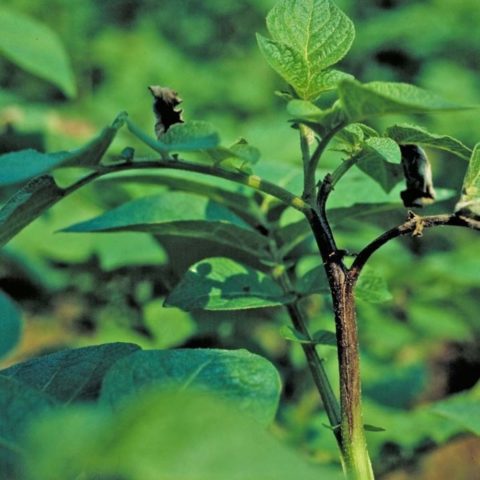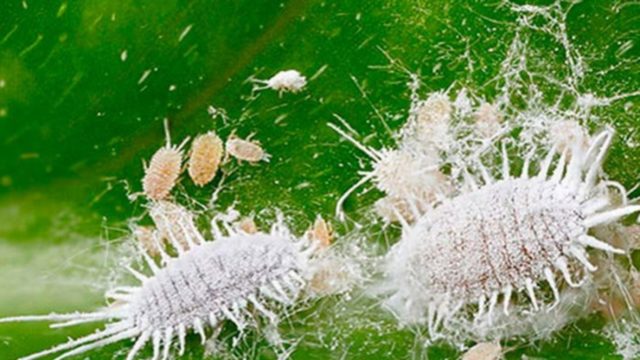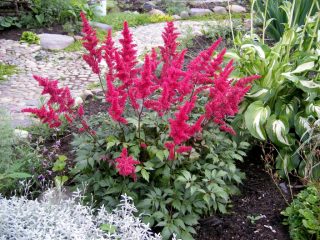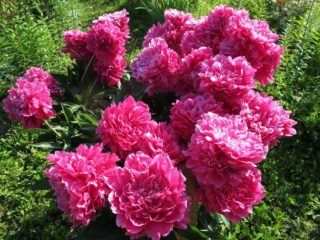Content
Evergreen iberis (Iberis sempervirens) is a low-growing perennial that is one of the first to please with its flowering with the arrival of spring warmth. This crop is a representative of the Cruciferous family. It comes from Spain, which in ancient times was called Iberia, for which the plant got its name. Despite its southern origin, the perennial has taken root well in countries with more severe climatic conditions. Planting and caring for evergreen Iberis is simple, but it is worth paying attention to some details when growing this plant.
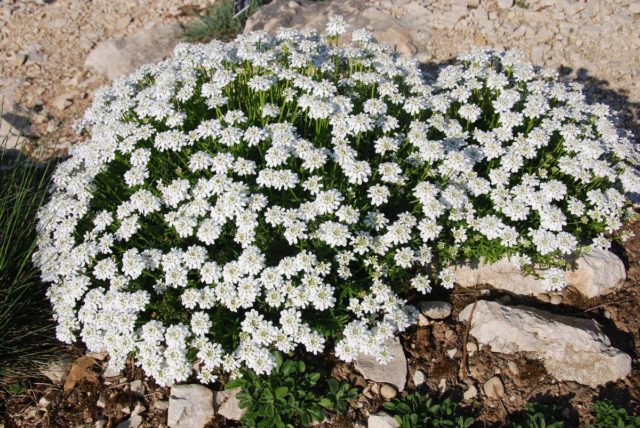
Iberis evergreen exudes a pleasant aroma during flowering
Description of evergreen iberis
This plant is characterized by low-growing bushes, the height of which does not exceed half a meter.Iberis evergreen forms numerous highly branched shoots. As they grow, they become woody at the bottom, but remain flexible at the top. The branches of Iberis evergreen are spreading, erect or creeping, depending on the type.
The leaves of the plant are oblong and narrow. Their length reaches 3-5 cm, and their width is no more than 0.5 cm. The shoots of Iberis evergreen are densely leafy, with a short step between the nodes, so the impression of a continuous fluffy hummock is created. The plates have a dark green tint with a tint.
The flowers of Iberis evergreen are simple, no more than 1.5 cm. They are collected in umbrella inflorescences. Their diameter is about 5 cm. Depending on the variety, the shade of the petals can be white, pink, or lilac. There is also Gibraltar evergreen Iberis, which has a beautiful purple hue to its petals.
The plant forms numerous buds. The first lush flowering occurs in May. Its duration is 8 weeks. If conditions are favorable, the perennial may bloom again in August, but not so luxuriantly.
The fruits of Iberis evergreen are two-leaf pods of oval or round shape. They are slightly flattened on the sides and have a small notch at the top. Inside each there are numerous dark brown seeds. When ripe, the pods burst and spill their contents. This is how the plant can self-sow.

During the flowering period, the leaves of the plant are practically invisible
The best varieties
There are about 40 species of this culture. They are the basis for developing new varieties. All types are similar to each other and are highly decorative.
Evergreen Iberis Tahoe
This variety is characterized by compact bushes up to 30 cm high and up to 40 cm wide. Tahoe is distinguished by an earlier flowering period, which occurs 2 weeks earlier than other species. The petals of this variety are white.

The evergreen Iberis Tahoe is characterized by increased frost resistance
Evergreen Iberis Snowflake (Snowflake)
A low-growing variety of crop. The height of its bushes reaches 25 cm, and the width is about 45 cm. It is undemanding to the composition of the soil, but needs good drainage when planted in heavy clay soil. Evergreen Iberis Snowflake features snow-white, fragrant flowers.

This variety is able to winter without shelter in the southern regions
Evergreen Iberis Whiteout
A new variety characterized by voluminous bushes. The height of the plant does not exceed 25 cm, but the diameter reaches 60 cm. The leaves are dark green up to 7 cm. The size of white flowers reaches 1.5 cm, they are collected in umbrella inflorescences, each 6 cm. The Whiteout variety is ideal for a rock garden.

The name of the evergreen Iberis Whiteout means "Whiteout"
Evergreen Iberis Fire Ice
A lush-flowering variety with snow-white flowers, which are collected in umbrella inflorescences with a diameter of 5 cm. It forms bushes up to 40 cm high and about 50 cm wide. During the flowering period, its leaves are not visible. The plant begins to form buds at the end of May. The duration of budding for Iberis Fire Ice is 20-25 days.

The Fire Ice variety prefers sunny, open areas.
Evergreen Iberis Snowfall
Another variety with snow-white and fragrant flowers. The plant forms umbrella-shaped inflorescences with a diameter of about 6 cm. The height of the perennial Snowfall does not exceed 30 cm, and the width is approximately half a meter.Flowering duration is 25 weeks if conditions are favorable.

Evergreen Iberis Snowfall remains decorative throughout the season
Findall
A variety with compact low-growing bushes, up to 25 cm high. The plant grows up to 40 cm wide. The variety is characterized by white flowers with a lilac tint. The diameter of the inflorescences of the Findel variety reaches 5 cm.

Evergreen Iberis Findall needs shelter for the winter
Little Jam
One of the shortest growing varieties. The height of the plant does not exceed 12 cm, but the diameter can be 40-45 cm. It forms umbrella inflorescences consisting of white flowers up to 1 cm in size. The Little Gem variety shows maximum decorative value when planted in loamy or rocky soil.

At the same time, Iberis Little Gem can form up to 200 inflorescences
Dana
Another dwarf variety of Iberis evergreen. The height of the bushes does not exceed 15 cm, and the diameter is about 50 cm. The Dana variety is distinguished by small flowers no larger than 1.0 cm in size, which are collected in inflorescences. During the budding period, the leaves are completely hidden behind them.

The flowering time of the Dana variety is about 6 weeks.
Application in landscape design
Evergreen Iberis is popular among novice gardeners and professional landscape designers. This is explained by its ability to fit perfectly into any composition and create a bright accent in group and single plantings.
The plant can be used:
- as a foreground in a multi-level flower bed;
- for framing garden paths;
- on the alpine slides;
- for borders, ridges;
- in rockeries.
Iberis evergreen is also suitable for planting in flowerpots, which can later be used for landscaping balconies, terraces, the entrance to the gazebo, and on the stairs.

Iberis evergreen looks great in combination with rocky boulders
Features of reproduction
Evergreen Iberis is easy to propagate by seeds, cuttings, and dividing the bush. Each of these methods has its own characteristics that need to be taken into account.
For propagation by seed, you can collect planting material yourself. To do this, it is necessary to cut the perennial fruits at the stage of technical maturity. Then dry on the windowsill, wrapped in paper to keep the seeds inside.
To propagate evergreen Iberis by cuttings, you need to cut them from the tops of last year's shoots 5-7 cm long. After this, remove the leaves at the bottom and powder the cut with any root former. Plant in a mixture of peat and sand, pre-moisten it.
Dividing bushes is used in early spring, when the perennial growing season begins. During this period, it is necessary to dig up an Iberis evergreen bush, cut the shoots to 1/3 of the length, and then divide them into 2-3 parts with a knife or shovel. After this, immediately plant it in a permanent place and water it abundantly.
Growing seedlings
To obtain well-developed seedlings by the beginning of the season, it is necessary to plant Iberis evergreen seeds in early March. To do this, you need to prepare wide containers, up to 10 cm high, with drainage holes.They should be filled with a soil mixture of turf, peat, sand and humus in a ratio of 2:1:1:1.
Before planting, the soil surface should be leveled and watered abundantly. After this, place the evergreen Iberis seeds at a distance of 3 cm from each other and sprinkle with a layer of sand no more than 0.5 cm thick. Cover the containers with film to create a favorable microclimate, and place in a dark place with a temperature of +22 degrees. After germination, 10-14 days later, the containers should be placed on a sunny windowsill. Seedlings should be watered sparingly when the soil dries out.

It is best to use a spray bottle for watering seedlings.
Planting care for evergreen iberis in the ground
In order for this perennial to fully develop and delight you with its flowering every year, it is necessary to plant it correctly on the site and select the optimal location. You should also familiarize yourself with what problems you may encounter during cultivation.
When to plant
Young seedlings of Iberis evergreen should be planted in a permanent place when the ground has warmed up well to a depth of 20 cm and the threat of return frosts has passed. Therefore, in the southern regions, planting should be carried out at the beginning of May, and in areas with a temperate climate - at the end of this month.
Site selection and preparation
For Iberis evergreen, you need to choose sunny, open areas, since even with light shading, the decorative effect of the plant is reduced, and the bushes become loose. At the same time, this perennial is not very demanding on the composition of the soil. The main thing is that it is loose and has good moisture and breathability.
2 weeks before the procedure, you need to dig up the area to a depth of 20 cm and carefully remove the roots of perennials. You should also add humus to the soil at the rate of 5 kg per 1 square meter. m. After this, level the surface.
Landing algorithm
Planting is carried out according to the standard scheme, so even a novice gardener can handle it.
Algorithm of actions:
- Prepare holes 10 cm deep at a distance of 30 cm from each other.
- Water and wait until the moisture is absorbed, sprinkle with wood ash.
- Carefully remove the seedling along with a lump of earth from the container.
- Place it in the center and cover it with soil.
- Compact the surface at the base.
Watering and fertilizing schedule
This perennial does not require special care. It should be watered only as a last resort during a long absence of rain, since waterlogging negatively affects the development of Iberis evergreen.
Fertilizing should be applied in early spring at the beginning of the growing season. During this period, you can use organic matter. It is recommended to apply fertilizer a second time when the buds are forming. At this time, it is necessary to use phosphorus-potassium mineral mixtures. This will not only prolong flowering, but will also increase the frost resistance of the evergreen Iberis.
Trimming
In late autumn, faded flower stalks should be removed. It is also recommended to cut off all broken and damaged shoots of Iberis evergreen. In addition, during the season it is recommended to periodically cut off the tops of shoots that stand out from the general mass.
Preparing for winter
In the southern regions, this perennial does not need shelter for the winter. The plant needs to be insulated only when grown in the central regions. To do this, you need to lay mulch with a 3 cm layer of peat or humus on the soil under the bush, and cover it with spruce branches on top.
Diseases and pests
Iberis evergreen has increased resistance to diseases and pests. But in the case of cold and rainy summers, the plant’s immunity decreases.
Possible problems:
- Cruciferous clubroot. A soil fungus that forms growths on roots. As a result, Iberis stops growing and blooming. The leaves turn yellow and the bush withers completely. Sick plants cannot be treated. For prevention, you need to use the drug "Maxim".
- Late blight. Brown spots appear at the base of the shoots, disrupting metabolic processes in tissues. This leads to wilting of the affected branches. For treatment, it is recommended to use Bordeaux mixture.
- Cruciferous flea beetle. Small black pest. It feeds on young shoot tips and foliage. This leads to slow growth and lack of flowering. To combat, you should use the drug "Actellik".
- Mealybug. A small pest that breeds in the top layer of soil. Affects the above-ground part of the plant. You can identify it by the cottony pieces that are localized at the base of the leaves. To fight, you should use Inta-Vir.
Need for transplant
Iberis evergreen is able to grow and bloom luxuriantly in one place for about 10 years. In the future, it is recommended to renew the bushes of the plant, since their decorative value and resistance to negative factors are reduced.
Conclusion
Planting and caring for evergreen Iberis is not particularly difficult. Therefore, this plant can be recommended to all gardeners who have no experience in growing ornamental crops. The perennial is able to delight with its annual flowering even in the absence of fertilizing and timely watering. The main thing is to plant it in an open area, away from tall plants.



